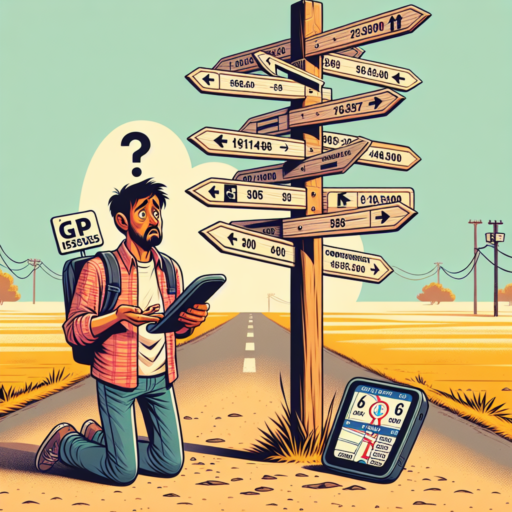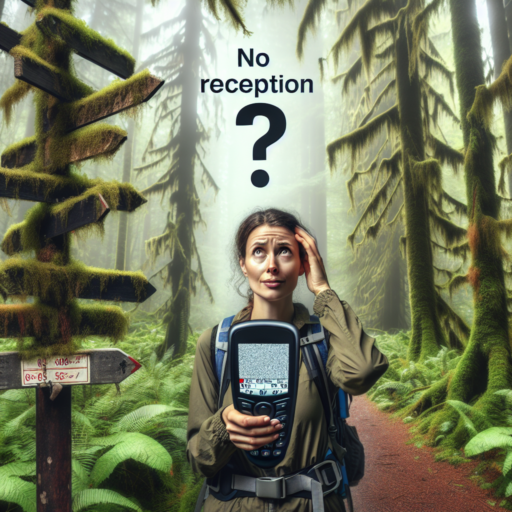Understanding GPS Issues: Common Problems and Solutions
Global Positioning System (GPS) technology has revolutionized the way we navigate and track in the modern world. However, despite its widespread use and reliability, users frequently encounter several common problems that can hinder its functionality. Understanding these issues and knowing how to address them is crucial for ensuring a seamless and efficient experience with GPS technologies.
Signal Loss in Urban Canyons
One of the most prevalent issues users face is signal loss, especially in areas with high-rise buildings, known as «urban canyons». The dense structures can block or deflect the GPS signals, making it difficult for devices to maintain a stable connection. Solutions to this problem include using a device with A-GPS (Assisted GPS) that utilizes data from the cellular network to help pinpoint your location more accurately or ensuring your software is updated to the latest version for improved performance.
Inaccuracy in Rural or Remote Areas
In contrast, rural or remote areas may also experience GPS inaccuracy due to the lack of nearby cell towers. The greater distances from these towers can lead to delays in signal transmission, resulting in less precise location data. To combat this, users can opt for devices that support multiple satellite systems, such as GLONASS or Galileo, alongside GPS. This diversity in satellite connections can enhance location accuracy and reliability, providing a better navigational experience in sparsely populated areas.
How to Troubleshoot GPS Connectivity Problems
Identify the Source of the Issue
Start by determining whether the GPS connectivity problem lies with your device or the environment. Check if other devices are experiencing similar issues in the same location. If they are, environmental factors such as tall buildings or heavy cloud coverage could be impacting signal strength. However, if the problem is isolated to your device, a hardware or software issue could be at fault.
Ensure Your GPS is Enabled and Updated
Verify that the GPS feature on your device is turned on. For most smartphones, this option can be found in the settings menu under «Location» or «Privacy.» Additionally, ensure your device’s operating system and any relevant GPS apps are up to date. Developers regularly release updates to improve functionality and fix bugs, including GPS connectivity issues.
Reset Your GPS or Perform a Soft Reset on Your Device
If the issue persists, try resetting your GPS. This can be done through a specific GPS reset function available in some devices or by toggling the GPS feature off and then back on. Should this not resolve the problem, performing a soft reset or restarting your device may help. This action can refresh your device’s internal systems without erasing any data, potentially clearing up any connectivity blocks.
Top Reasons Your GPS is Not Working and How to Fix It
Encountering issues with your GPS can be both frustrating and inconvenient, especially when you rely on it for navigation. Understanding the common causes behind these malfunctions can help you identify and resolve the problems efficiently. Here are the top reasons your GPS is not working and practical solutions to fix it.
Obstructed GPS Signal
One of the primary reasons your GPS may not be working correctly is due to an obstructed signal. Tall buildings, heavy foliage, and even atmospheric conditions like solar flares can interfere with the signal. To fix this issue, try moving to an area with less obstruction or wait for the atmospheric conditions to improve. Ensuring your device’s software is up to date can also help mitigate these signal interruptions.
Outdated GPS Software
An outdated GPS system can lead to inaccuracies or failures in tracking. Manufacturers often release updates that improve the GPS’s functionality and accuracy. To resolve this, ensure your device’s software is regularly updated. Access your device’s settings to check for available updates and apply them. This simple step can significantly enhance the performance of your GPS.
Device Battery Issues
A low or failing battery can also impact the performance of your GPS. Insufficient power might prevent the GPS from functioning or cause it to shut down abruptly. Always keep your device charged, especially before heading out for long trips. If your device has a replaceable battery and you suspect it’s no longer holding a charge properly, consider replacing the battery to restore optimal performance.
Improving GPS Accuracy: Tips and Tricks
Ensuring the accuracy of your GPS device is essential for navigating with confidence. Whether you’re exploring new terrains or simply commuting, enhancing your GPS precision can vastly improve your user experience. Below, we delve into practical tips and tricks to improve your GPS device’s accuracy, ensuring that your journeys are as smooth and accurate as possible.
Optimize Your Device Settings
To start, optimizing your device settings is crucial. Ensure that your GPS is set to High Accuracy mode. This option, available on most smartphones and navigation devices, allows the device to use a combination of GPS, Wi-Fi, Bluetooth, and cellular networks to determine your location. This multi-faceted approach not only improves accuracy but also reduces the time taken to acquire your location.
Maintain a Clear View of the Sky
Physical obstructions can significantly degrade GPS signal strength. Buildings, heavy foliage, and even atmospheric conditions like heavy clouds can block satellite signals, leading to inaccuracies. To mitigate this, try to maintain a clear line of sight to the sky whenever possible. For instance, when using your device in urban areas filled with high-rises, moving to an open space can enhance signal reception, improving location accuracy.
Regularly Update Your Device
Last but not least, keeping your device software up to date is paramount. Manufacturers regularly release updates that improve overall performance and, more specifically, GPS functionality. These updates can include new satellite positions, tweaks to algorithms that calculate your position, and improvements to how your device interacts with different networks for location services. By ensuring your device is running the latest software version, you can significantly enhance its GPS accuracy.
Navigating GPS Signal Loss: What to Do When You’re Offline
Experiencing a GPS signal loss while navigating can be frustrating, especially during critical times when you heavily rely on your device to guide you. Whether it’s due to tall buildings, remote areas, or even technical issues, understanding how to effectively handle these situations can save you from unnecessary stress and keep you on track.
Identifying Potential Causes of GPS Signal Loss
Several factors can contribute to the sudden disappearance of your GPS signal. Common culprits include being in a «dead zone» where the signal is blocked by physical structures like skyscrapers or mountains, atmospheric conditions, and even the state of your device’s battery. Recognizing these causes can help you anticipate and mitigate potential problems before they escalate.
Effective Strategies to Overcome GPS Disruptions
- Prepare Offline Maps: Before embarking on your journey, download maps for offline use. This proactive measure ensures you have a backup plan, enabling you to navigate without a live GPS signal.
- Reboot Your Device: Sometimes, simply restarting your GPS device or smartphone can resolve signal issues by refreshing your connection to satellites.
- Adjust Your Location: If possible, move to a location with fewer obstructions. Open spaces away from tall buildings or dense forests can significantly improve your GPS reception.
While GPS technology has drastically improved over the years, signal loss is still a plausible scenario under certain conditions. By understanding the common causes and adopting practical solutions, you can minimize the impact of being offline and continue your journey with confidence.
No se han encontrado productos.
Updating Your GPS System: A Step-by-Step Guide
Updating your GPS system is crucial for ensuring accurate navigation and optimizing your travel experience. Whether you’re relying on a built-in vehicle GPS or a hand-held device, staying updated with the latest maps and software can significantly improve functionality and user experience. This guide will walk you through the simple steps to ensure your GPS system remains up-to-date.
Step 1: Check Your GPS Model and Version
First, identify your GPS device model and its current software version. This information can usually be found in the ‘About’ or ‘System Information’ section of your GPS settings. Knowing your model and version is essential for finding the correct updates and avoiding any compatibility issues.
Step 2: Download the Latest Updates
Visit the manufacturer’s website and navigate to their updates section. Here, you should find updates categorized by device model and type. Select your model and review the list of available updates. Pay special attention to major updates or map expansions that can add new features or improve device functionality.
Step 3: Install the Updates on Your GPS System
Once the updates are downloaded, connect your GPS device to your computer using a USB cable or through Wi-Fi, depending on your device’s capabilities. Launch the update application provided by the manufacturer and follow the on-screen instructions to install the updates. Ensure your device remains connected during the entire process to avoid any installation errors.
The Impact of Weather on GPS Functionality and Performance
When discussing GPS (Global Positioning System) technology, it’s often assumed that its functionality is impervious to the whims of nature. However, the reality is that weather plays a significant role in both the functionality and performance of GPS systems. Understanding how diverse weather conditions affect GPS can provide invaluable insight into its operational reliability.
Severe Weather Conditions and Signal Disruption
The most direct impact of weather on GPS systems comes from severe conditions such as heavy rain, snowstorms, or dense cloud covers. These conditions can disrupt the GPS signal path between satellites in orbit and receivers on the ground, causing degradation in signal quality. Satellite signals, which are crucial for triangulating positions, can be weakened by atmospheric disturbances, leading to decreased accuracy in position tracking.
The Role of Atmospheric Conditions
Aside from stormy weather, atmospheric conditions, including ionospheric and tropospheric delays, can also affect GPS signals. The ionosphere, with its charged particles, can refract GPS signals, extending their travel time to Earth and, therefore, affecting accuracy. Tropospheric delays, caused by humidity and temperature variations in the lower atmosphere, similarly impact signal speed and precision. GPS systems compensate for these factors through complex algorithms, but extreme conditions can still pose challenges.
In conclusion, while GPS technology has become a cornerstone of modern navigation and timing systems, it is not entirely immune to the effects of the natural environment. Weather and atmospheric conditions continue to influence GPS functionality and performance in measurable ways. Recognizing these impacts is essential for developing more resilient systems and for users to maintain a realistic expectation of GPS capabilities under various environmental conditions.
GPS Interference: Identifying and Overcoming Obstacles
Global Positioning System (GPS) technology has revolutionized how we navigate the world, providing precise location data for everything from smartphones to aviation. However, GPS interference poses significant challenges, affecting accuracy and reliability. Identifying and overcoming these obstacles is crucial for maintaining the integrity of GPS signals. In this discussion, we delve into the nature of these disruptions and explore effective strategies to mitigate their impact.
Types of GPS Interference
Two primary forms of interference affect GPS signals: natural and man-made. Natural interference includes atmospheric effects, such as ionospheric delays and solar storms, which can degrade signal quality. Conversely, man-made interference ranges from unintentional signals from broadcast towers to deliberate jamming devices. Recognizing the source of interference is the first step in developing mitigation strategies.
Strategies for Overcoming GPS Interference
- Enhanced Signal Processing: By implementing advanced algorithms, GPS receivers can filter out noise, improving signal reception even in the presence of interference.
- Adopting Alternative Technologies: Integrating complementary technologies like Wi-Fi positioning or inertial navigation systems can reduce dependence on GPS and provide backup location data.
- Regulatory and Policy Frameworks: Establishing clear regulations and policies to control the use of jamming devices and safeguard GPS frequencies is essential for protecting signals from deliberate interference.
Understanding and addressing GPS interference is instrumental in preserving the functionality and reliability of GPS-based systems. By adopting a multi-faceted approach that includes technological innovations and regulatory measures, we can ensure that GPS continues to be a pivotal tool in our navigational toolkit.
Expert Advice: Preventing Common GPS Issues Before They Start
Navigating the world of GPS technology can sometimes feel like steering through a labyrinth, especially when technical difficulties arise. Fortunately, with the right knowledge and preparations, many of the most common GPS issues can be prevented before they even start. This begins with understanding the core problems and implementing strategic solutions beforehand.
Ensure Clear Sky Visibility
One of the most straightforward yet effective strategies is to ensure your GPS device has a clear view of the sky. Obstructions such as buildings, dense foliage, or even cloud cover can interfere with the signal strength between your device and the satellites. By choosing locations with minimal obstructions, you can significantly reduce the likelihood of encountering GPS inaccuracies or loss of signal.
Maintain Your Device’s Software and Firmware Up-to-Date
Regular updates are crucial for the optimal performance of your GPS device. Manufacturers often release software and firmware updates that enhance functionality, improve accuracy, and fix known bugs. By keeping your device updated with the latest versions, you preempt many issues that could arise from outdated technology. This simple step can save you from unexpected disruptions during critical usage moments.
Understanding the nuances of GPS technology and taking preemptive measures can greatly diminish the chances of encountering common GPS issues. By ensuring clear visibility and maintaining up-to-date software, you place yourself in a position of advantage, ready to navigate the world with confidence and accuracy. While these strategies do not guarantee a complete absence of problems, they significantly contribute to a smoother and more reliable GPS experience.
Choosing the Right GPS Device: Features to Look For
When selecting a GPS device, understanding the crucial features that meet your needs can turn a daunting decision into a straightforward choice. The right GPS should not only navigate you from point A to point B but also enhance your travel experience with additional functionalities. In this context, several standout features are essential to consider.
Accuracy and Reliability
The primary function of any GPS device is to provide you with accurate location information. Look for devices that offer high sensitivity GPS receivers and GLONASS or Galileo support for better coverage, especially in challenging environments. The integration of multiple satellite systems can significantly improve location accuracy and reliability, ensuring you remain on the right path, whether you’re navigating through dense urban landscapes or remote wilderness areas.
Screen Size and Readability
A GPS device’s screen size and readability directly impact its usability. Devices with larger screens offer easier map viewing and interaction, reducing the likelihood of misinterpretations during a journey. However, it’s essential to consider the trade-off between screen size and portability. Opt for a device with a bright, anti-glare screen to ensure clear visibility under direct sunlight, an important feature for outdoor adventurers or anyone using GPS in a vehicle during the day.
Connectivity features, such as Bluetooth and Wi-Fi, allow your GPS device to interact with other devices, enhancing its functionality. With Bluetooth, you can connect your smartphone for hands-free calling or accessing real-time traffic updates. Wi-Fi connectivity enables easy map and software updates without the need for a computer, ensuring your device remains up-to-date with the latest information. These features add a layer of convenience and future-proofing, making your GPS device a more versatile tool in your technology arsenal.




